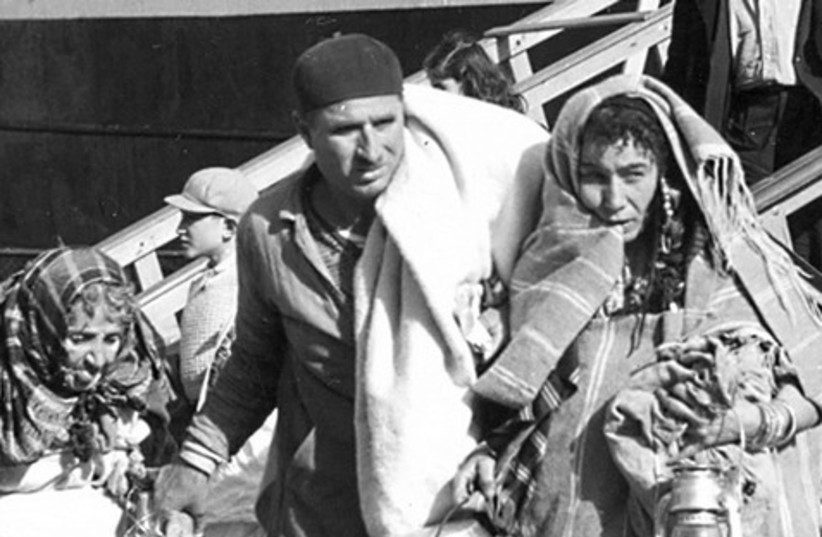This is an impressive, beautifully illustrated coffee-table book of great historical importance. In the decades following Israel’s birth, almost a million Jews were expelled from their homelands in the Middle East, North Africa and Iran. This is their story – of their persecution and rescue, of their tragic memories, and of new lives they forged.
It is part of Jewish history that is not well known. Although Jews had lived in the Middle East and North Africa since ancient times, it was the arrival of Islam in the seventh century CE that brought about their oppression under Muslim rulers. Although the story of Palestinian refugees in 1948 after the War of Independence is well documented, the story of Sephardi Jewish refugees is just a footnote in history.
Before World War II, there were close to 850,000 Jews in the Middle East and North Africa; there were less than 4,000 by 2021. They were mostly ignored by the international community.
Sephardi (from Sfarad, Spain) Jews trace their roots to the Iberian Peninsula, or those who were exiled and dispossessed in 1492. In Israel, they were termed Mizrahim as opposed to Ashkenazim, who came from Western and Christian lands.
There are five sections in this magnificently photographed book: Ancient Homelands; the Arab Jews before Israel; The Exodus Begins: 1948-1967; The Exodus Continues: 1967-1980; Today and Tomorrow.

For me, there was a history lesson on almost every page of this book, with stunning illustrations – mosaics, pages from illuminated manuscripts, paintings, postcards, amazing portraits, identity cards, posters, historic documents, newspaper headlines – bringing the story to life.
At the end of the book, there are 10 pages of portrait photos titled Sephardi Faces, each one with a name, year and place of birth, and what country they fled to. Each story is fascinating, often heartbreaking.
Maria Meghnagi Aron was born in Tripoli in 1945. On Friday, June 3, two days before the Six Day War began, they fled for safety to Italy. Her mother was preparing for the Sabbath, when her brother said: “Pack your luggage.” She took one bag; so did her parents. They fled to Rome and heard on the radio that the war between Israel and the Arab countries had started.
The report said all Jewish stores were burning, and houses in Tripoli were being attacked, and Jewish families massacred. For a week they didn’t know if her brother was still alive. The Libyans took everything – the houses, business, bank accounts. They were left with nothing.
Eli Amir was born in Baghdad in 1937. He arrived in Israel in 1951 on one of the first flights on a primitive, shaky plane. He held his younger sister on his knees. His mother was pregnant. When they got to Israel, they kissed the ground. They were called Arab Jews, even though they were fleeing from the Arabs.
“We were nothing. We didn’t exist on the Jewish people’s map.” Some families were treated like animals – it was claimed they were bringing diseases with them and were sprayed with DDT, which originally was developed as an insecticide.
This is both a tragic story of a world left behind and also a triumphant one of new lives forged eventually in new lands. You are left with a deeper knowledge of Jewish history and of the resilient spirit of Sephardi Jews who found the strength to survive and prosper despite the shocking injustice they had faced.
The amount of research that must have gone into producing this book is mind-boggling.
The writer is the author of 14 books. Her latest novel is Searching for Sarah. dwaysman@gmail.com
Sephardi Voices: The Untold Expulsion of Jews from Arab Lands
By Henry Green
& Richard Stursberg
Figure 1 Publishing Inc.
156 pages; $35
